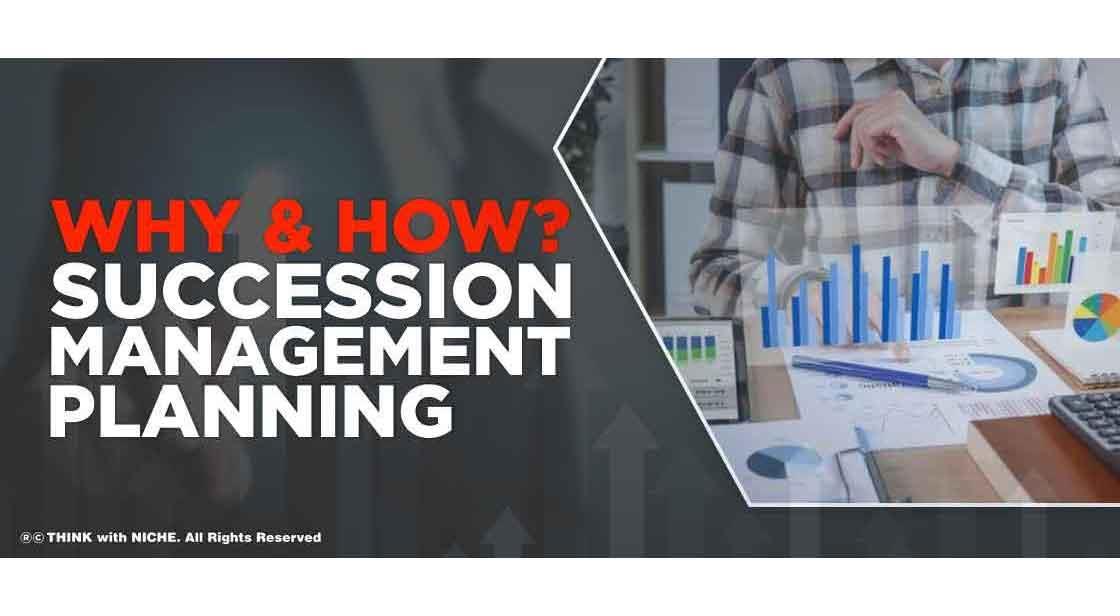Why and How? Succession Management Planning

Blog Post
A systematic process of recognizing, choosing, and developing important personnel and skilled new hires to take essential responsibilities and equip the organization for the future is known as succession management. This technique guarantees that critical leadership positions are filled by qualified and interested individuals. Effective succession planning involves identifying potential workforce gaps and developing long-term objectives and visions to address them, particularly through leadership development. #TWN
Succession planning assures that a company can keep running efficiently even if a key position becomes vacant. A succession plan may be necessary for a corporation to preserve the organization's internal knowledge, identify skill gaps that require training, and invest in workers. As business operations become more difficult, qualified leaders must address them and keep the corporation moving forward. Employees, on the other hand, frequently feel unprepared for the leadership role due to a lack of skills and qualities. As a result, many firms have turned their attention to succession tools and planning. The procedure aids in the identification of employees with the necessary skills and talent to fill the empty position.
What is the significance of succession planning?
Succession plans can benefits early companies too
Succession planning has expanded and altered throughout the years, just as business practices have. It's no more a plan which can only be used when leadership changes. A succession roadmap can now be employed before its "true" purpose is required. It can be used to develop strong leadership, assist a company in surviving everyday market fluctuations, and compel executives to assess and examine the organization's existing objectives.
Your company is disaster-proofed
You purchase insurance to safeguard your firm from natural disasters such as floods, tornadoes, and fires. To protect your company's confidential information, you deploy security systems and prepare backup in an off-site location. Leaders may believe they are too young to be struck by illness. Alternatively, they may overlook the possibility that a key person (or several) will be tempted away by another organization in need of their expertise and prepared to pay top cash for them. Any of these conditions could make a company particularly vulnerable.
Departmental relationships are strengthened by succession planning
When departments communicate regularly, they are much more likely to have synergy, which promotes a strong culture. Make sure your succession planning initiatives are linked to human resources. After all, human resources are all about people.
With the proper talent, you can achieve your business goals
You can deliberately hire and develop the ideal individuals with the required talents to help you reach your major goals and objectives most effectively once you know what they are.
Putting the right people in the right posts reduces lead times and improves decision-making
If top leaders fall ill, die, or quit for one of your competitors, delays in projects and goals can occur. Then there's the problem of having no one competent to fill that position. To avoid delays, it's critical to have the correct individuals ready to take over.
Tips for successful succession planning
There is a lot that you can learn from the benefits only but here are some more tips to help you create an effective succession management plan.
Begin early
One of the most typical issues is that succession planning is not given the attention it requires early enough. Many managers hide their heads in the sand unless forced to do so by an employee nearing retirement. Essentially, missing an opportunity to plan ahead of time for a smooth transition. It can lead to a lot of stress later on. Begin to consider it as soon as feasible. Typically, ten years before an estimated retirement date in your industry or professional role.
Building a Leadership Future
Leadership qualities and requirements should be hardwired into the company's future succession planning. Aligning a potential leader's talent with the business is crucial, and it can only be done if your company's primary business drivers are clearly defined. Develop a comprehensive profile of your leaders, describing the needed leadership competencies as well as the knowledge and personal characteristics you seek in leadership positions.
Provide opportunities for learning and development
The most important component of a succession plan is granting these opportunities to possible successors you discover during the process, yet it is often overlooked.
Create a strategy for attracting and retaining top people
This method should be based on what was learned about present and future skill-set requirements during the succession planning process. Assess any required skill sets in applicants in the talent pipeline early on in the process. This will ensure that your organization has the necessary skill sets to fill unfilled positions and boost the talented workforce to the top.
Make use of the knowledge and experience of your older employees
Consider how senior employees may pass on their knowledge and abilities so that it does not leave your company when they go. Could a leader or senior management work alongside their replacement for 6-12 months, then stay part-time as a mentor to support important choices as needed? Allow ample time for them to pass on their contacts, company and client insight, methods, and ideas, as well as to help smooth over any issues that may arise while they are still present.
Be truthful, Do Not Assume
Starting a dialogue about what individuals truly want to do might be difficult at times. Is it their intention to leave as quickly as possible, whether to travel or spend extra time with their families? Or do they want to keep working for as long as needed? And what were the chances and options if it's the latter? What would they be eager to go through with? What's manageable from a business standpoint? Make no assumptions, no matter what you do. The absence of a coherent plan can cause anxiety on both parties, with senior employees believing they have no future and younger employees hoping they will migrate.
Conclusion
It might be difficult to strike a balance between planning an efficient succession strategy and more pressing company objectives. But that isn't an excuse to put things off. Create room for regular chats (followed up with easy actions), sharing connections, and ideas for gaining new business, among other things. It will be far easier to manage this than doing nothing at all for it to become urgent and take over your life.
You May Like
EDITOR’S CHOICE












